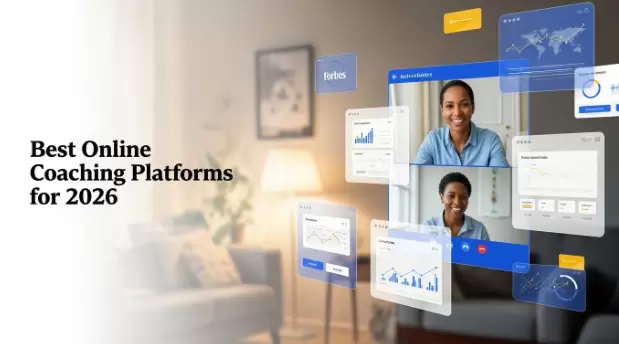With the advent of e-commerce, manufacturers have unprecedented opportunities to expand their reach, streamline their operations, and enhance profitability. Amidst this digital revolution, adopting Manufacturing Execution Systems (MES) is pivotal in optimizing production processes, quality control, and resource management.
As the lines between traditional brick-and-mortar sales and online commerce continue to blur, manufacturers increasingly realize the need to adapt and thrive in this new digital landscape. This article explores the top 3 strategies manufacturers can employ to succeed in e-commerce.
Manufacturing Execution Systems (MES)
MES (Manufacturing Execution System) is specialized application software designed to solve the tasks of synchronization, coordination, analysis, and optimization of production output within any production. MES systems belong to the class of shop floor-level management systems but can also be used for integrated production management at the enterprise as a whole.
MES collects and analyzes production processes, product demand, and inventory data. This allows manufacturers to adapt more quickly to changes in the market, reconfigure production to meet current requirements, and closely monitor trends. As a result, manufacturers can more easily predict and meet customer needs, which helps increase online sales.
MES helps in maintaining accurate inventory records and managing inventory turnover. This avoids overstock or shortages, which can affect a company's ability to meet online demand and maintain customer service levels.
Manufacturing Execution Systems (MES) enhance transparency and automate operations, reducing human errors and operational costs. Integrating Manufacturing CRM streamlines customer data, allowing manufacturers to tailor products, respond to market changes, and offer competitive prices in online stores. The synergy between MES and CRM creates an agile manufacturing environment, optimizing efficiency and customer satisfaction.
Content Marketing

Kapost's research shows that companies in the B2B segment that blog get 67% more leads on average than companies that don't. However, it's worth remembering that content marketing requires a lot of resources to prepare and regularity in publishing it. This content can be, for example, brand identity and E-commerce logo, articles and videos, webinars, research, and interviews.
The content should help solve a specific problem to create the image of an expert and thus influence the decisions of potential customers. The topics discussed should not be chosen randomly. A little research in Google Trends will help select the main topic, discussion areas in the video, phrases, and words that should be included in the article. Publishing content based on such a prepared analysis allows you to achieve high positions in search engines. It provides a good user experience for customers looking for answers to product/service questions, comprehensively covering the subject matter.
The benefits of this e-commerce strategy are free traffic, increased user confidence, and the creation of an expert image.
Content marketing is a form of promotion that requires patience and time. Its effects will also depend on the quality of thecontent itself, its optimization, and promotion methods. No specific terms can be specified here.
YouTube channels as a form of content marketing
You can discuss your production process and show and test products on your YouTube channel. If someone is looking for information about a product and is unsure which brand to choose, they will likely find your video and maybe make a purchase. Remember to choose a title that matches the search query and prepare a video description with product links. You can send out an email to announce when new videos are released. Whenever you have particularly compelling videos, you could also promote them via texting notifications to drive even more traffic.
Utilize user-generated content and social media
Not utilizing the content that your users generate is a huge issue. This is because it's not easy to refresh an e-commerce website and keep it alive. But photos and videos taken by real customers are great for this purpose.
Adding a "widget" that connects your online store's website to its official social media accounts brings significant benefits. These include revitalizing your social media accounts, increasing your credibility as a manufacturer, inspiring other customers to buy, and encouraging repeat purchases.
Snapchat Planets
Snapchat's "Planets" feature provides a unique and interactive way to engage with your e-commerce store's audience. Here are some creative ideas on how to leverage Snapchat Planets to create engaging content:
- Virtual Store Tours: Use the AR feature to create a virtual tour of your store. Each planet can represent different sections or categories of your store. For instance, one planet could showcase your latest collection, another could highlight bestsellers, and another could offer exclusive deals.
- Product Launches: Announce new product launches by creating a cosmic journey. Users can travel from one planet to another, each unveiling a new product with engaging visuals and detailed descriptions. This creates a sense of excitement and discovery around new arrivals.
- Interactive Shopping Experience: Create interactive shopping experiences where users can explore products in a fun and engaging way. For example, users can navigate through different planets to find hidden discounts or special offers, making shopping more interactive and rewarding.
- Customer Rewards and Loyalty Programs: Develop a loyalty program where users earn points or rewards by exploring different planets. Each planet can offer unique rewards, such as discounts, free samples, or exclusive access to new collections. This gamifies the shopping experience and encourages repeat visits.
- Themed Campaigns: Align your marketing campaigns with planetary themes. For instance, during holiday seasons, you can create a holiday-themed planet where users can find special holiday deals, gift ideas, and festive content.
By leveraging Snapchat Planets, you can transform your e-commerce store’s content into a captivating and interactive experience that keeps your audience engaged, entertained, and coming back for more.
Use newsletters to captivate your target audience
Newsletters can strengthen the connection with the consumer and demonstrate that shopping with you is safe and profitable. Remember that the more personalized the message, the more effective it will be. It should contain a call to action (CTA), such as a button that redirects to products.
Don't forget to put a box to check for consent to process personal data when subscribing to the newsletter. Also, add an option to unsubscribe from the newsletter in each email.
A regular email account is not adapted for the newsletter, so do not use your everyday email address. This way, you risk being blacklisted by spam filters. The benefits of newsletters are optimizing advertising costs, increasing loyal audiences from different channels, and building mutually beneficial relationships with partners.
Print and PDF Channel

In the digital landscape, the significance of Print and PDF channels cannot be underestimated for manufacturers engaging in e- commerce. The tactile experience of print offers unique psychological advantages, enhancing comprehension and retention, which are vital for technical manuals and complex product details. PDFs merge this benefit with digital accessibility, ensuring wide reach while maintaining format integrity. This dual-channel approach not only caters to diverse consumer preferences but also bolsters marketing efforts, making technical content more engaging and understandable. Utilizing catalog software further streamlines the integration of Print and PDF channels into e-commerce strategies, enhancing product presentation and distribution efficiency.
Contextual advertising: Google Ads

If you want the advertising you invest in to have an immediate effect, it's worth turning to Google Ads. Google displays paid ads in search results and on Google's network of partners (on-site ads in the form of banners).
You bid when you search for a keyword for which advertisers have set up a campaign. The search engine determines who will appear in the search results and at what position. When assigning bids, the quality of the landing page, the quality of the ads, and the stated maximum bid per click are all considered.
To start setting up your campaign, simply login to your Google Ads account. Using the service is free, and you'll find plenty of online tutorials on creating a campaign. However, you may find that it won't generate valuable traffic if you don't set it up optimally. Your budget will be wasted on clicks that won't lead to conversions. This is why most companies resort to the help of agencies, including specialized agencies.
There is probably no industry in which Google Ads campaigns cannot be used. However, advertising can be moderately profitable if there is a lot of competition in the industry and margins are low.
The benefits of this e-commerce strategy are large audience reach, the ability to get the target audience as accurately as possible, and very detailed statistics on results.
The effect of launching a campaign should appear almost immediately. A properly set up campaign will increase traffic to the website. By systematically optimizing the campaign, you can achieve much better results.
You also can use paid Facebook Ads post promotion. It is important to pinpoint your target group, but how do you do it? A popular way is to draw up a customer portrait, that is, to make a collective image of your customer.
This considers age, gender, income level, location, interests and hobbies, and online behavior. Such a person will display a group interested in your services or goods.
Implement personalized product selections
Recommended product block and cross-selling are very powerful internet marketing strategies. In addition to the recommended product block, which shows the analogs of the product being viewed, it is worth paying attention to the website's functionality.
As a rule, the products in the "You may also like" block are selected based on the pages previously viewed by the customer, his previous purchases on the website, as well as what was purchased by other customers with similar tastes. If this functionality is implemented technically sound, it can lead to additional items added to the shopping cart. "You may also like" block partly acts as an alternative to the advice of a specialist or consultant.
With blocks for cross-selling related products is a similar situation. Usually, in them are placed products from the same product line, collection, or simply those that perfectly match the product being viewed. You can use AI-powered live chats to proactively engage in customer conversations and suggest products based on their behavior.
Conclusion
E-commerce for manufacturers is a vast field, and in this article, we have presented the most popular and most effective forms of selling online. Remember, no effective e-commerce strategy exists. Each industry and business will have specifics. Try combining the above mentioned e-commerce strategies to maximize your chances of success and increase your profits.


 Table of Content
Table of Content










